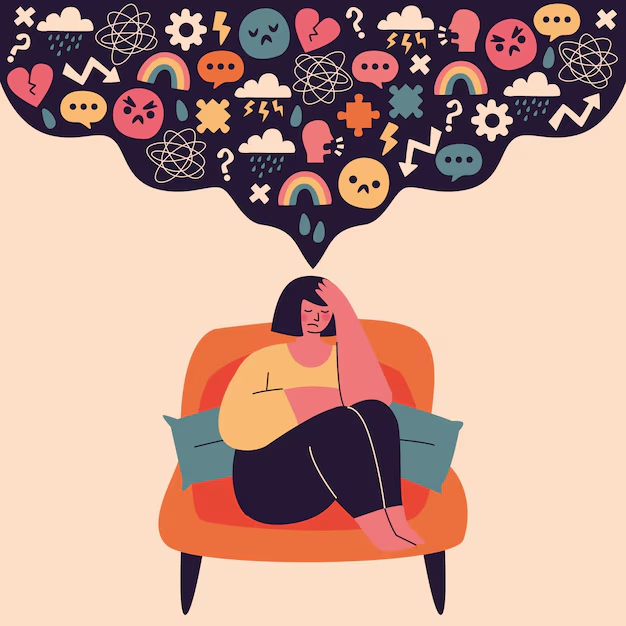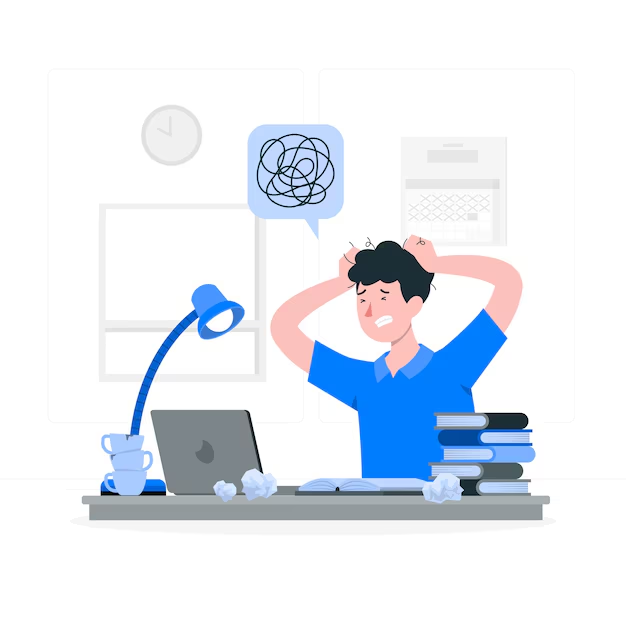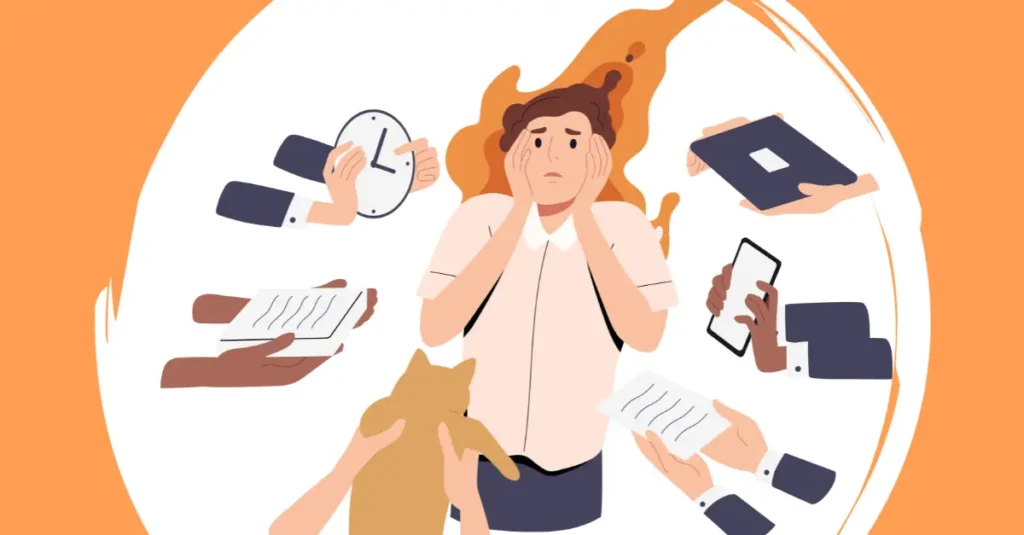Introduction
“Just stay positive!” “Look on the bright side!” “Everything happens for a reason!”
We’ve all heard these phrases before—sometimes from well-meaning friends, social media influencers, or even our own inner voices. In a world obsessed with optimism, we are constantly encouraged to think positively, no matter what life throws at us. While having a hopeful outlook can be beneficial, too much positivity can backfire.
Enter toxic positivity—the belief that no matter how difficult or painful a situation is, one must maintain a positive mindset. While this may sound uplifting, research suggests that suppressing negative emotions can lead to burnout, anxiety, and strained relationships (Folkman & Moskowitz, 2000).
So, where do we draw the line between healthy optimism and toxic positivity? And why is it okay—not to be okay?

What is Toxic Positivity?
Toxic positivity is the overgeneralization of a happy, optimistic state across all situations. It dismisses or invalidates genuine emotions by insisting on positivity, even when it is neither helpful nor appropriate (Quintero & Long, 2019).
While positivity can motivate and inspire, forcing optimism in all circumstances can make people feel guilty for experiencing normal human emotions like sadness, anger, or frustration.
Examples of Toxic Positivity in Everyday Life
- At work- Your boss tells you to “just be grateful you have a job” when you express concerns about burnout.
- In relationships- A friend minimizes your struggles by saying, “Others have it worse.”
- On social media- Instagram influencers flood your feed with “Good vibes only” posts, implying that negativity is unwelcome.
- During personal struggles- Telling yourself, “I shouldn’t feel this way. I should be happy,” instead of allowing yourself to process emotions.
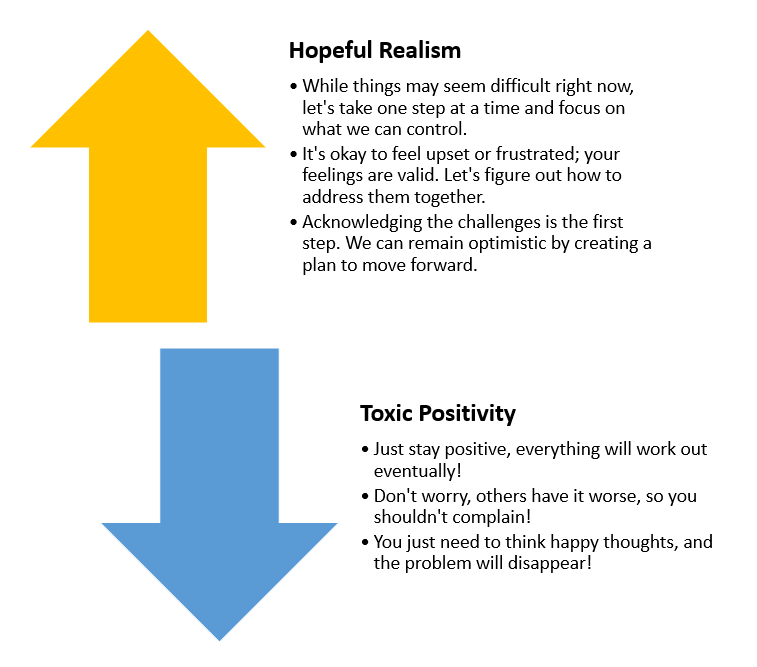
These messages, whether from external sources or internalized self-talk, shame people for experiencing real emotions, leading to emotional suppression.
Read More- What is Brain Rot
Dangers of Suppressing Negative Emotions
While positivity is important, it should not come at the expense of emotional authenticity. Research suggests that suppressing emotions can have serious mental and physical consequences.
- Increased Stress and Anxiety- When we bottle up negative emotions, they don’t just disappear. Instead, they build up and manifest as chronic stress and anxiety. Studies show that emotional suppression can lead to increased cortisol levels (the stress hormone), which can contribute to high blood pressure, digestive problems, and weakened immunity (Gross & Levenson, 1997).
- Emotional Exhaustion and Burnout- Constantly forcing yourself to be positive can lead to emotional exhaustion. This is especially common in workplaces where employees are expected to maintain a cheerful attitude despite overwhelming workloads. According to a study published in the Journal of Occupational Health Psychology, emotional suppression at work is a predictor of burnout and job dissatisfaction (Brotheridge & Grandey, 2002).
- Strained Relationships- Toxic positivity can make people feel unheard and invalidated. Imagine opening up about a difficult breakup, only to be told, “Just move on! Everything happens for a reason.” Instead of comfort, you feel dismissed. Research shows that emotional validation strengthens relationships, while emotional dismissal can lead to feelings of isolation (Reis et al., 2000).
- Increased Risk of Depression- Ironically, the pressure to always be happy can make people feel worse. A study in the Journal of Personality and Social Psychology found that people who try to avoid negative emotions at all costs are more likely to experience depressive symptoms (Bastian et al., 2012).
- The Rebound Effect- Ever tried not to think about something, only to think about it even more? That’s called the rebound effect. Suppressing negative emotions can make them resurface stronger than before, leading to an emotional explosion when we least expect it (Wegner, 1994).
Social Media and the Rise of Toxic Positivity
Social media has amplified toxic positivity culture, with countless influencers promoting a “good vibes only” lifestyle. While positivity can be inspiring, it creates unrealistic expectations when taken to extremes.
- Instagram’s “Happiness Aesthetic”- Perfectly curated photos make it seem like everyone else is living their best life, leading to feelings of inadequacy.
- Overuse of Motivational Quotes- While “Think positive thoughts” might sound nice, it can discourage people from addressing real problems.
- Fear of Appearing Negative- Many people feel pressured to post only happy moments, hiding their struggles from social media.
This “highlight reel effect” can distort reality, making people believe that feeling sad or struggling means they are failing at life.
When Positivity Becomes Healthy Again
So, if toxic positivity is harmful, does that mean we should be negative all the time? Absolutely not! Healthy positivity acknowledges reality while still fostering hope. Here’s how we can strike the right balance-
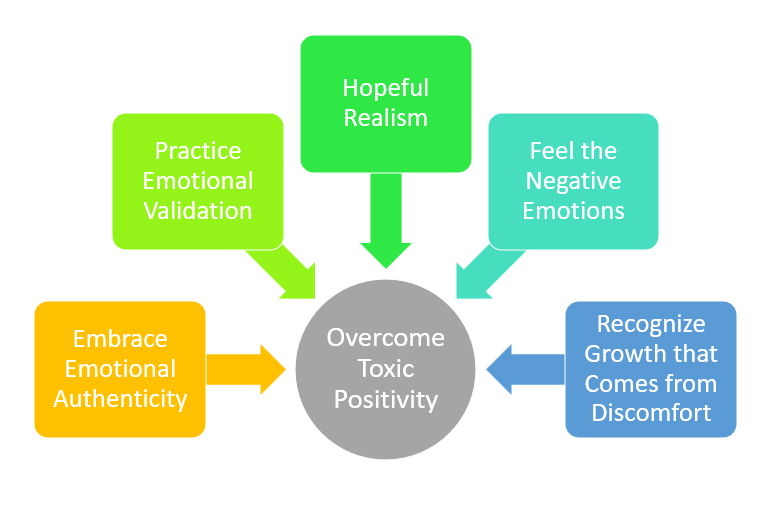
1. Embrace Emotional Authenticity- Instead of forcing yourself to be happy, practice emotional honesty. Recognize that all emotions—positive and negative—are valid. Saying, “I feel anxious right now, and that’s okay” is much healthier than saying, “I shouldn’t feel anxious; I should be happy.”
2. Practice Emotional Validation- When someone expresses distress, instead of saying, “Just stay positive,” try-
- “That sounds really tough. I’m here for you.”
- “It’s okay to feel upset. Your feelings are valid.”
- “I understand why you feel that way. Let’s talk about it.”
This approach creates emotional safety, strengthening relationships and improving mental well-being.
3. Shift from Toxic Positivity to Hopeful Realism- Instead of blind optimism, try realistic optimism—the idea that while things may be difficult, there is still hope for improvement.
- Toxic Positivity- “Everything happens for a reason.”
- Hopeful Realism- “This is a hard situation, but I will find a way through it.”
4. Allow Yourself to Feel Negative Emotions- Suppressing emotions doesn’t make them go away—processing them does. Strategies for emotional regulation include-
- Journaling- Writing about emotions helps process them.
- Mindfulness and Meditation- Acknowledge emotions without judgment.
- Talking to a Trusted Friend or Therapist- Verbalizing feelings reduces their intensity.
5. Recognize That Growth Comes from Discomfort- Difficult emotions often lead to personal growth. Grief, disappointment, and frustration are part of life, and learning to navigate them builds resilience (Tedeschi & Calhoun, 2004).
It’s Okay Not to Be Okay
While positivity is valuable, it should never come at the cost of emotional authenticity. Life is a mix of highs and lows, and experiencing a full range of emotions is part of being human. Instead of chasing constant happiness, let’s strive for emotional balance—acknowledging our struggles while still holding onto hope.
So the next time you hear, “Just be positive!”, remember- Real strength lies in embracing all emotions—not just the happy ones.
References
Bastian, B., Kuppens, P., De Roover, K., & Diener, E. (2012). “Emotion suppression and depression: A meta-analysis of findings.” Journal of Personality and Social Psychology, 102(3), 592-615.
Brotheridge, C. M., & Grandey, A. A. (2002). “Emotional labor and burnout: Comparing two perspectives of ‘people work.’” Journal of Vocational Behavior, 60(1), 17-39.
Folkman, S., & Moskowitz, J. T. (2000). “Positive affect and the other side of coping.” American Psychologist, 55(6), 647.
Gross, J. J., & Levenson, R. W. (1997). “Hiding feelings: The acute effects of inhibiting negative and positive emotion.” Journal of Abnormal Psychology, 106(1), 95.
Quintero, C., & Long, J. (2019). Toxic Positivity: The Harmful Effects of Always Putting on a Happy Face. New York: Mindwell Press.
Tedeschi, R. G., & Calhoun, L. G. (2004). “Posttraumatic growth: Conceptual foundations and empirical evidence.” Psychological Inquiry, 15(1), 1-18.
Wegner, D. M. (1994). “Ironic processes of mental control.” Psychological Review, 101(1), 34-52.
Subscribe to PsychUniverse
Get the latest updates and insights.
Join 3,022 other subscribers!
Niwlikar, B. A. (2025, January 6). What is Toxic Positivity? 5 Insightful Ways to Make it Healthy Again. PsychUniverse. https://psychuniverse.com/toxic-positivity/

